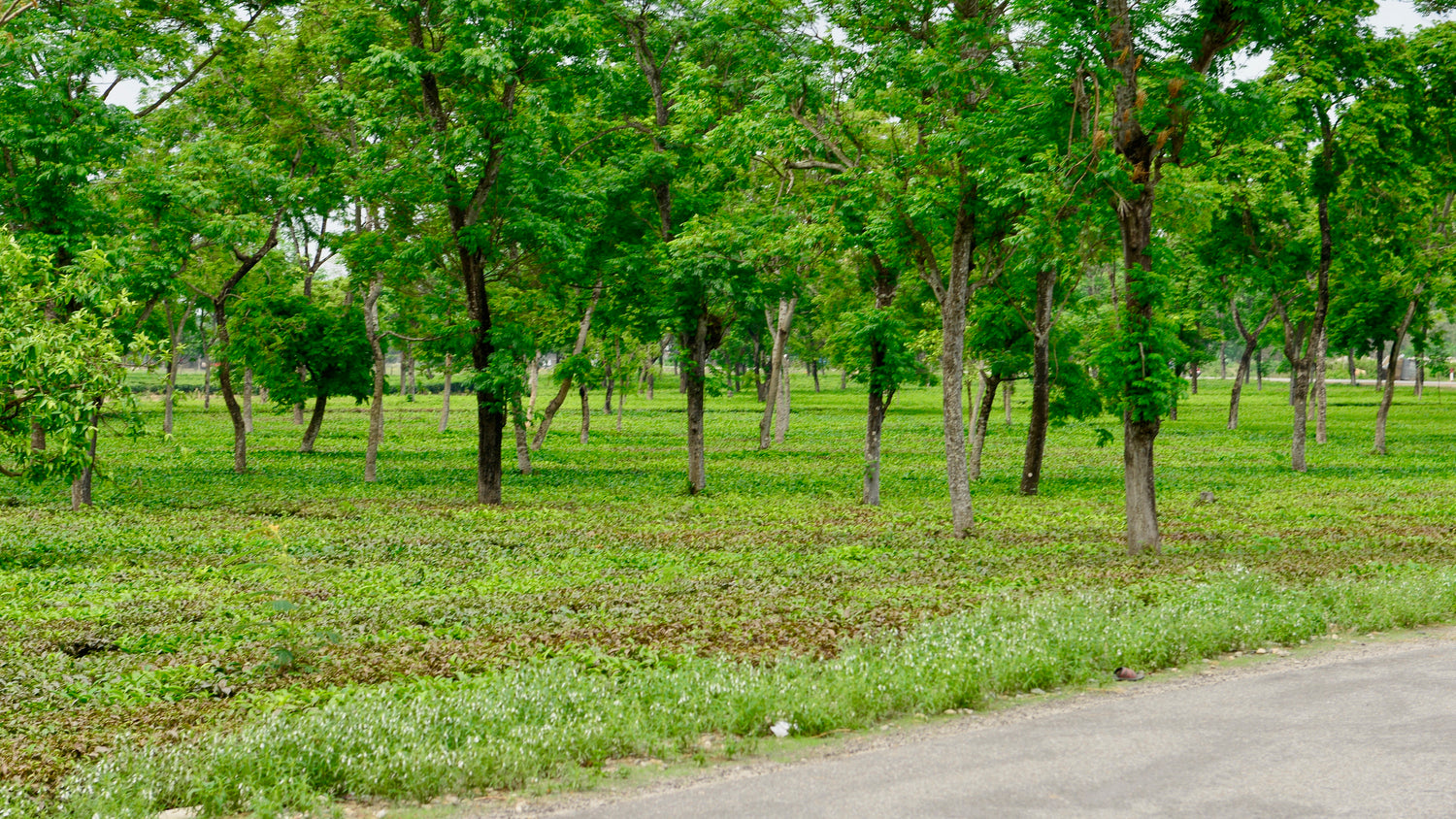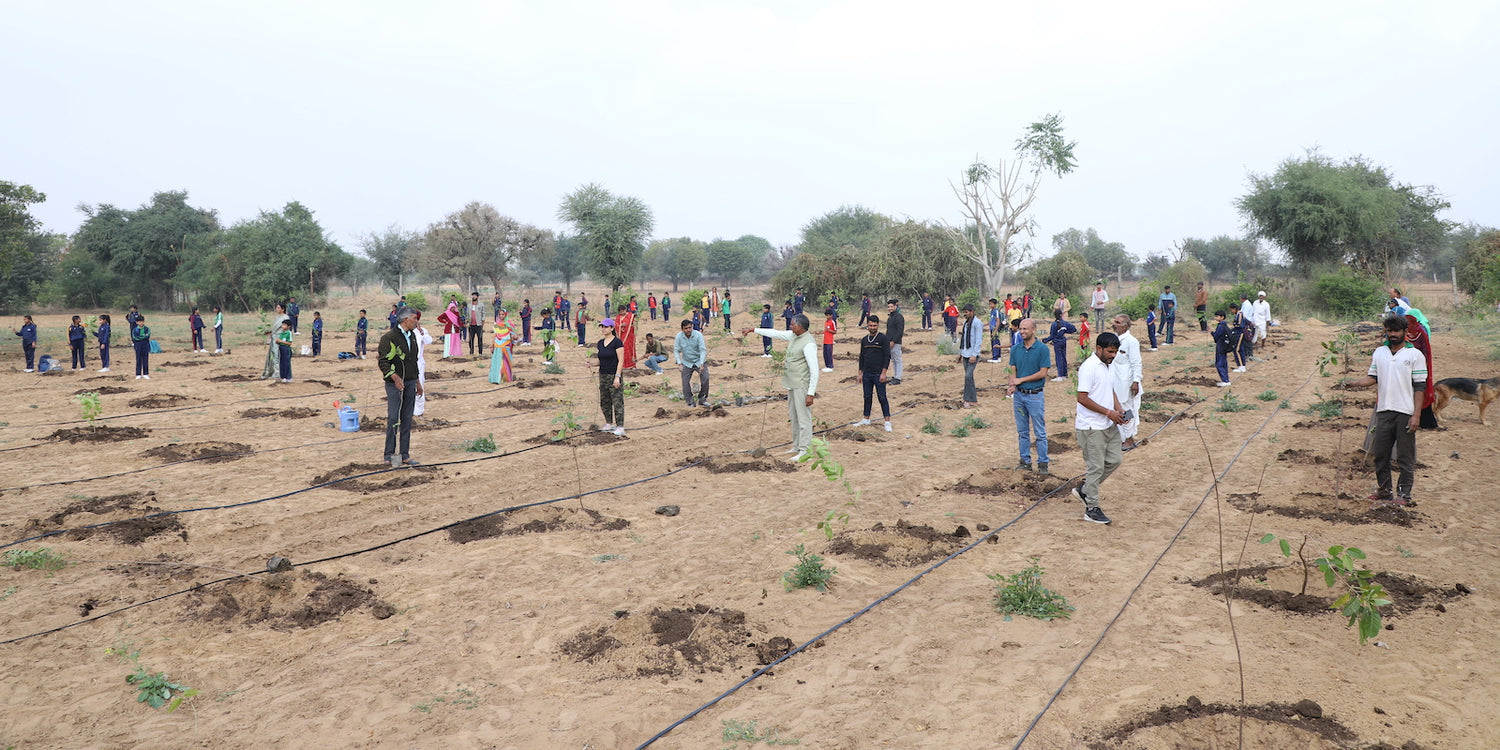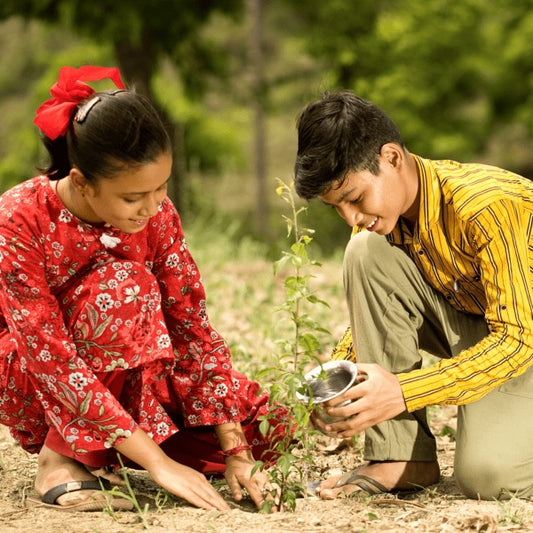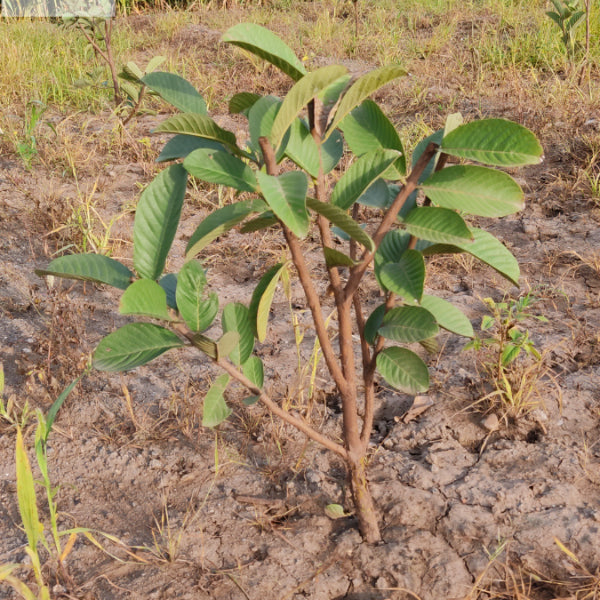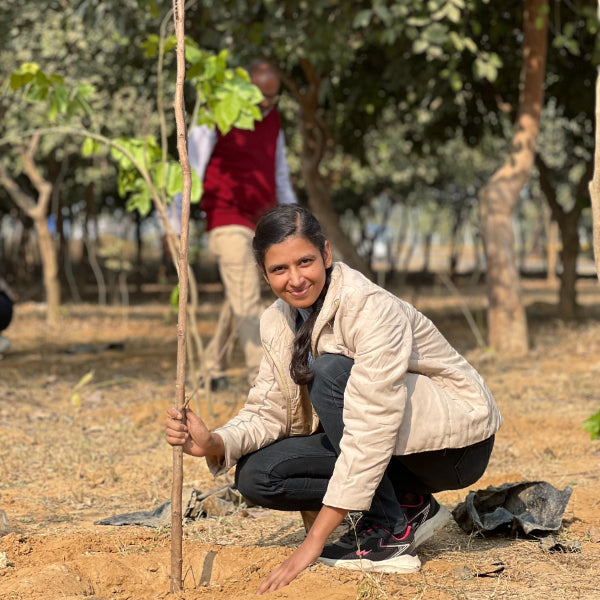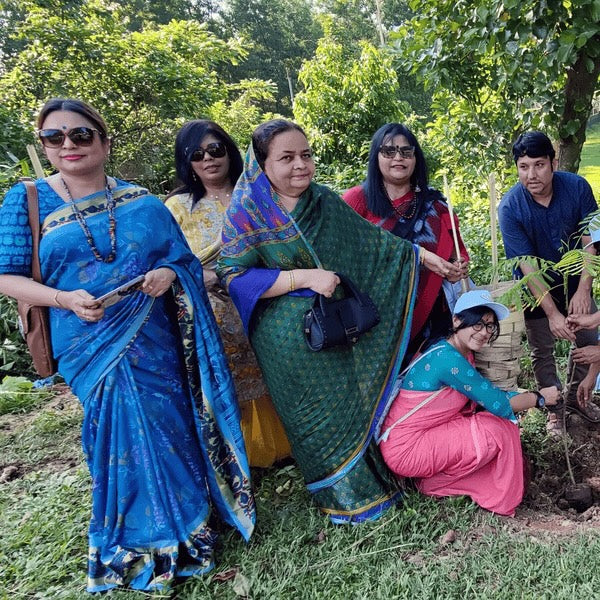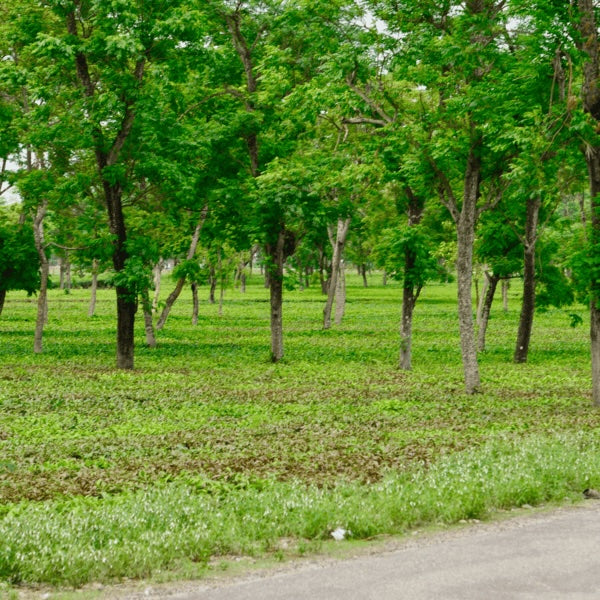Agroforestry in Himachal Pradesh: Farming on the Hills
Agroforestry in Himachal Pradesh is a remarkable blend of agriculture and forestry, creating a sustainable farming system that thrives in the hilly te Read more
Connect with us
-
👥 Corporates
If you are looking for:
- 🌲 Tree Plantation Events
- 📊 CSR Projects
📧 corporate@growbilliontrees.com
📞 +91 9699723523
💬 +91 9325931304 WhatsApp (Only)
🕒 Mon - Sat | 10am - 7pm IST
-
🧩 Tree Plantation NGOs
If you are looking for:
- 💰 Financial Assistance
- 🤝 Operational Support
📧 support@growbilliontrees.com
📞 +91 9699723523
💬 +91 9325931304 WhatsApp (Only)
🕒 Mon - Sat | 10am - 7pm IST
-
🌼 Individuals
If you are looking for:
- 👥 Group Tree Plantation Drive
- 🌳 Bulk Tree Plantation
📞 +91 9699723523
💬 +91 9325931304 WhatsApp (Only)
🕒 Mon - Sat | 10am - 7pm IST
Trending
Trees for Corporates
Agroforestry in Himachal Pradesh: Farming on the Hills
Agroforestry in Himachal Pradesh is a remarkable blend of agriculture and forestry, creating a sustainable farming system that thrives in the hilly terrain. 🌄 This practice not only enhances biodiversity but also improves soil health and increases farmers' income.
Himachal Pradesh, known for its stunning landscapes, is home to diverse flora and fauna. The state's unique climatic conditions make it ideal for agroforestry, where farmers cultivate crops alongside trees. 🌳 This method has been practiced for centuries, but its significance has grown in recent years due to climate change and the need for sustainable practices.
Historically, the indigenous communities of Himachal Pradesh have relied on agroforestry for their livelihoods. They cultivated crops like apples, pears, and various vegetables while planting trees that provided shade, fuel, and fodder. This traditional knowledge is now being integrated with modern techniques to enhance productivity.
Scientific studies show that agroforestry systems can increase crop yields by 20-50% compared to conventional farming. 🌱 This is achieved through improved soil fertility, reduced erosion, and better water retention. The trees also act as windbreaks, protecting crops from harsh weather conditions.
One of the most significant benefits of agroforestry is its positive impact on the environment. 🌍 Trees absorb carbon dioxide, helping to mitigate climate change. In Himachal Pradesh, agroforestry can play a crucial role in sequestering carbon, as the state aims to become carbon neutral by 2030.
Moreover, agroforestry promotes biodiversity. By planting a variety of trees and crops, farmers create habitats for numerous species, enhancing the ecosystem's resilience. 🦋 This diversity is vital for maintaining ecological balance and ensuring food security.
In recent years, initiatives like "Grow Billion Trees" have emerged to promote agroforestry across India, including Himachal Pradesh. 🌱 This ambitious project aims to plant one billion trees nationwide, focusing on sustainable practices that benefit both farmers and the environment.
Grow Billion Trees collaborates with local communities, providing training and resources to implement agroforestry systems effectively. Farmers are educated on the best tree species to plant alongside their crops, ensuring compatibility and maximizing benefits. 🌳
The project also emphasizes the importance of native species, which are better adapted to local conditions and require less maintenance. By promoting indigenous trees, Grow Billion Trees helps restore ecosystems and supports local wildlife. 🦉
Additionally, the initiative addresses the economic aspect of agroforestry. Farmers participating in the program can diversify their income sources by selling timber, fruits, and other tree products. This not only boosts their livelihoods but also encourages sustainable land use practices. 💰
Agroforestry in Himachal Pradesh is not just about farming; it's about creating a sustainable future. 🌈 By integrating trees into agricultural landscapes, farmers can combat climate change, enhance biodiversity, and improve their economic stability.
Furthermore, agroforestry systems can help in water conservation. The trees play a crucial role in maintaining the water cycle, reducing runoff, and increasing groundwater recharge. 💧 This is particularly important in hilly regions where water scarcity can be a significant challenge.
As the world faces increasing environmental challenges, agroforestry offers a viable solution. 🌍 It promotes sustainable land management practices that can be replicated in various regions, making it a global model for sustainable agriculture.
In Himachal Pradesh, the government is also supporting agroforestry initiatives through policies and programs aimed at promoting sustainable farming practices. 🌿 This includes providing financial assistance and technical support to farmers willing to adopt agroforestry systems.
Moreover, educational institutions and NGOs are actively involved in research and development, exploring innovative agroforestry practices that can further enhance productivity and sustainability. 📚
As we look to the future, the potential of agroforestry in Himachal Pradesh is immense. 🌟 With the right support and resources, farmers can transform their landscapes into thriving ecosystems that benefit both people and the planet.
In conclusion, agroforestry in Himachal Pradesh represents a harmonious relationship between agriculture and nature. 🌳 By embracing this sustainable practice, farmers can secure their livelihoods while contributing to environmental conservation. The Grow Billion Trees initiative is a testament to the power of community-driven efforts in creating a greener, more sustainable future for all.
Join the movement today! 🌱 Support agroforestry and be a part of the change. Together, we can make a difference, one tree at a time!
Agroforestry Practices
In the hilly terrains of Himachal Pradesh, agroforestry practices are like a well-choreographed dance between trees and crops. Farmers here have mastered the art of combining forestry with agriculture, creating a symphony of productivity. Imagine apple orchards sharing space with vibrant vegetable patches, all while the trees provide shade and nutrients. This harmonious relationship not only boosts yields but also enhances soil health. The locals have turned their farms into eco-friendly havens, proving that you can indeed have your cake and eat it too—just with a side of fresh apples!
Sustainable Farming Techniques
When it comes to sustainable farming techniques in Himachal Pradesh, think of it as a farmer's version of yoga—flexible, balanced, and deeply rooted in tradition. Farmers are adopting practices like crop rotation and intercropping, ensuring that the land remains fertile and productive. These techniques are not just good for the environment; they also keep the farmers' wallets happy. By reducing dependency on chemical fertilizers, they’re cultivating a healthier ecosystem while still reaping the rewards. It’s a win-win situation, where Mother Nature gives a nod of approval!
Soil Conservation Methods
Soil conservation methods in Himachal Pradesh are akin to a protective hug for the earth. With the region's steep slopes, erosion can be a real party pooper. Farmers are employing techniques like terracing and contour farming to keep their precious soil in place. These methods not only prevent erosion but also enhance water retention, making every drop count. It’s like giving the soil a cozy blanket to snuggle under, ensuring it stays rich and fertile for generations to come. Who knew that caring for the earth could be so stylish?
Biodiversity Enhancement
Biodiversity enhancement in Himachal Pradesh is like throwing a grand feast for nature. Farmers are planting a variety of crops and trees, creating a buffet of options for local wildlife. This not only supports the ecosystem but also helps in pest control, reducing the need for chemical interventions. The more diverse the farm, the more resilient it becomes. It’s a clever strategy that keeps pests guessing and farmers smiling. After all, who wouldn’t want a farm that’s both a sanctuary for wildlife and a treasure trove of produce?
Climate Resilience
Climate resilience in Himachal Pradesh is the farmer's secret superpower. With changing weather patterns, farmers are adapting by diversifying their crops and incorporating agroforestry practices. This not only helps them withstand the whims of Mother Nature but also ensures a steady income. By planting trees alongside crops, they create a microclimate that protects their produce from extreme weather. It’s like having an umbrella on a sunny day—unexpected but incredibly useful. Farmers here are not just surviving; they’re thriving, proving that resilience is the name of the game.
Economic Benefits
The economic benefits of agroforestry in Himachal Pradesh are as sweet as the apples that grow on its hills. By integrating trees with crops, farmers are not only increasing their yields but also tapping into multiple income streams. Timber, fruits, and vegetables all come together to create a financial buffet. This diversification reduces risk and enhances profitability, making farming a more attractive venture. It’s like having a diversified investment portfolio, but instead of stocks, you’re reaping the rewards of nature’s bounty. Who knew farming could be such a savvy business move?
Community Involvement
Community involvement in agroforestry in Himachal Pradesh is like a neighborhood potluck—everyone brings something to the table. Farmers are banding together to share knowledge, resources, and even labor. This collaborative spirit not only strengthens bonds but also enhances the overall success of agroforestry initiatives. Workshops and training sessions are popping up, turning the community into a hub of innovation. It’s a delightful reminder that when it comes to farming, teamwork makes the dream work. Together, they’re cultivating not just crops but a sense of belonging.
Policy Support
Policy support for agroforestry in Himachal Pradesh is like a warm hug from the government. With increasing recognition of the benefits of agroforestry, policies are being crafted to encourage sustainable practices. Subsidies, training programs, and research initiatives are all part of the package, making it easier for farmers to adopt these methods. It’s a win for the environment and the economy, proving that when policymakers and farmers work hand in hand, the results can be nothing short of magical. After all, a little support goes a long way in nurturing the hills!
You may like
Corporate Plantations
FAQ
What is agroforestry and why is it important in Himachal Pradesh?
Agroforestry is the practice of integrating trees and shrubs into agricultural landscapes, creating a symbiotic relationship between crops and forestry. In Himachal Pradesh, where the terrain is hilly and the climate diverse, agroforestry is crucial. It enhances soil fertility, conserves water, and provides additional income through timber and non-timber products. Plus, it helps combat soil erosion, making it a win-win for farmers and the environment. At Grow Billion Trees, we believe that planting trees is not just about greenery; it’s about creating a sustainable future!
How can agroforestry benefit farmers in Himachal Pradesh?
Farmers in Himachal Pradesh can reap numerous benefits from agroforestry. By diversifying their crops with trees, they can improve their income streams through fruits, nuts, and timber. The trees also provide shade, reducing crop stress during hot summers. Additionally, agroforestry practices can enhance biodiversity, leading to healthier ecosystems. At Grow Billion Trees, we’re all about empowering farmers to embrace this sustainable approach, ensuring they thrive while nurturing the hills!
What types of trees are best suited for agroforestry in Himachal Pradesh?
In Himachal Pradesh, a variety of trees can be integrated into agroforestry systems. Popular choices include fruit trees like apple, pear, and walnut, which not only provide food but also generate income. Fast-growing species like poplar and eucalyptus are great for timber. Additionally, indigenous trees like deodar and chir pine can enhance biodiversity. At Grow Billion Trees, we recommend selecting trees that complement local crops and soil conditions for maximum benefits!
How does agroforestry contribute to climate change mitigation in Himachal Pradesh?
Agroforestry plays a pivotal role in climate change mitigation by sequestering carbon dioxide through tree growth. In the hilly terrains of Himachal Pradesh, trees act as carbon sinks, absorbing CO2 and reducing greenhouse gases. Moreover, agroforestry systems enhance soil health and resilience, making them more adaptable to climate variations. At Grow Billion Trees, we’re committed to planting trees that not only beautify the landscape but also fight climate change one sapling at a time!
What are the challenges of implementing agroforestry in Himachal Pradesh?
While agroforestry offers numerous benefits, it’s not without challenges. Farmers may face initial costs for planting and maintaining trees, and there can be a learning curve in managing diverse crops. Additionally, land tenure issues and lack of awareness can hinder adoption. However, at Grow Billion Trees, we’re here to support farmers with knowledge, resources, and a community that believes in the power of trees to transform agriculture!
Is there government support for agroforestry in Himachal Pradesh?
Yes, the government of Himachal Pradesh actively promotes agroforestry through various schemes and initiatives. Financial assistance, training programs, and subsidies for planting trees are available to encourage farmers. The focus is on sustainable practices that enhance productivity while preserving the environment. At Grow Billion Trees, we keep our ears to the ground, ensuring farmers are aware of these opportunities to grow their green dreams!
How can I get involved in agroforestry initiatives in Himachal Pradesh?
Getting involved in agroforestry initiatives is easier than you think! You can start by connecting with local NGOs, agricultural departments, or organizations like Grow Billion Trees that focus on tree planting and sustainable farming. Participating in workshops, volunteering for tree planting drives, or even starting your own agroforestry project can make a difference. Remember, every tree counts, and together we can create a greener Himachal Pradesh!
What role does Grow Billion Trees play in promoting agroforestry in Himachal Pradesh?
At Grow Billion Trees, we’re passionate about promoting agroforestry as a sustainable solution for farmers in Himachal Pradesh. We provide resources, training, and support to help farmers integrate trees into their farming systems. Our mission is to plant billions of trees while empowering local communities to embrace agroforestry practices. With a sprinkle of wit and a whole lot of dedication, we’re turning the hills green, one tree at a time!

